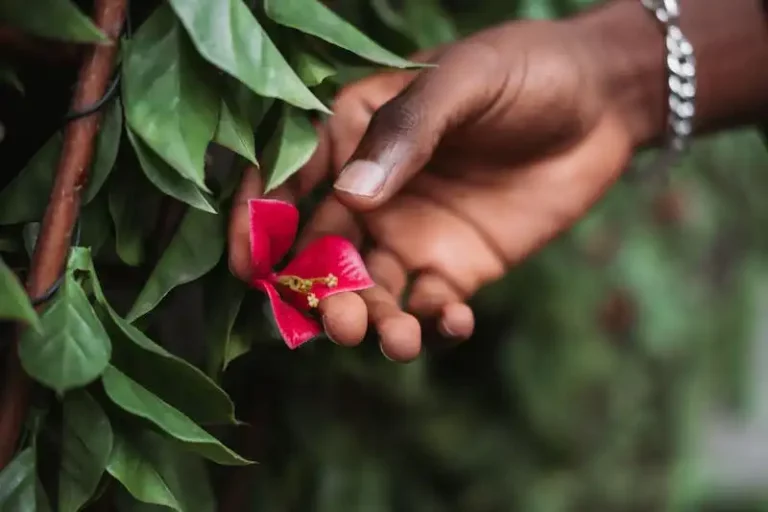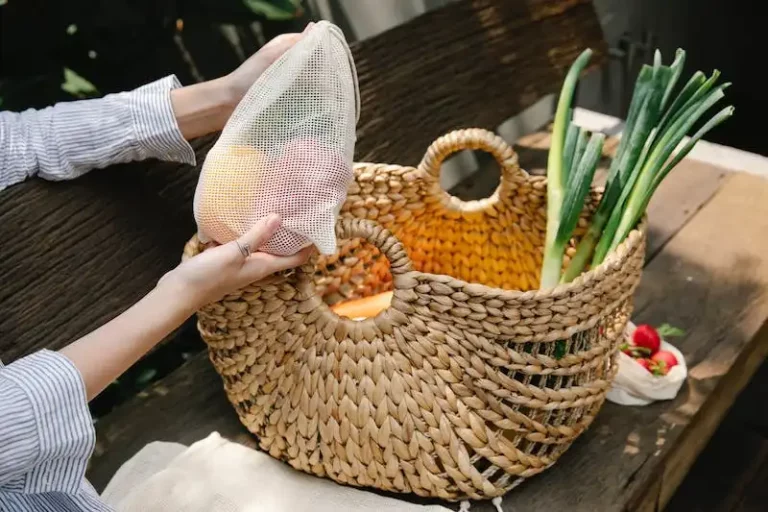The Begonia Maculata, also known as the Polka dot plant, has become a popular houseplant due to its stunning foliage and easy care. This plant is native to Brazil and is characterized by its large green leaves adorned with white spots resembling polka dots. Its origin in the humid rainforests of Brazil makes it a plant that requires high-quality care.
To ensure the health of your Begonia Maculata, it is important to provide it with the right care. This includes placing it in a window with bright, indirect sunlight, as direct sunlight can cause leaf burn. The soil should be kept consistently moist, but avoid overwatering as waterlogging can lead to root rot. It is also important to fertilize the plant regularly during the growing season to promote healthy growth and blooming.
Pests can sometimes be an issue with Begonia Maculatas, so it is important to keep an eye out for insect infestations. Common pests that can affect this plant include aphids, mealybugs, and spider mites. If you notice any signs of pest infestation, it is important to take prompt action to prevent further damage to the plant.
Pruning is another important aspect of caring for a Begonia Maculata. Regularly removing dead or damaged leaves can help promote new growth and maintain a compact shape. Additionally, pinching back the stems can encourage bushier growth and prevent the plant from becoming leggy.
Begonia Maculatas are relatively low-maintenance plants, but they do require some specific care. They should be kept in a well-draining soil mix that retains moisture but doesn’t become waterlogged. They also prefer a humid environment, so misting the leaves or placing the plant on a tray of pebbles filled with water can help increase humidity levels.
Overwintering a Begonia Maculata can be done in the same way as other tropical plants. When the temperatures start to drop, bring the plant indoors and keep it in a bright location away from any drafts. During the winter months, the plant will go into a dormant phase, so watering should be reduced and fertilizing should be stopped until the plant starts showing signs of new growth in spring.
It is worth mentioning that Begonia Maculatas have sap that can cause irritation to the skin, so it is important to handle them with care and wash your hands thoroughly after coming in contact with the plant. It is also recommended to keep them away from pets as they can be toxic if ingested.
In conclusion, caring for a Begonia Maculata Polka dot plant is relatively easy as long as you provide it with the right conditions. Mimic its native rainforest environment by keeping it in a humid, well-drained soil mix and placing it in a bright location with indirect sunlight. With proper care, this stunning plant will thrive and add a touch of tropical beauty to your home.
Polka Dot Begonia Begonia maculata
The Polka Dot Begonia, also known as Begonia maculata, is a beautiful plant that is popular among gardeners for its unique patterned leaves. This article will provide you with information on how to care for this stunning plant to ensure its health and well-being.
Originating from Brazil, Polka Dot Begonias thrive in high-quality, well-draining soil and prefer to be placed near a window where they can receive bright, indirect sunlight. Direct sunlight can affect the leaves and cause them to turn brown or develop brown spots.
One of the main problems that Polka Dot Begonias can face is waterlogging. To prevent this issue, make sure to water the plant thoroughly and allow the excess water to drain out. Avoid overwatering or letting the plant sit in water for long periods. If you notice the leaves turning brown or becoming mushy, this may be a sign of waterlogging.
When it comes to fertilizing the Polka Dot Begonia, it is best to do so during the growing season, which is usually from spring to summer. Use a high-quality, balanced fertilizer and dilute it to half strength. Fertilize the plant every 2-4 weeks to promote healthy growth and vibrant leaves.
To propagate Polka Dot Begonias, you can take stem cuttings and root them in water or soil. Make sure to use clean, sharp scissors or pruning shears when taking the cuttings to prevent any damage to the plant. Remove the lower leaves and place the cutting in water or moist soil. Keep the cuttings in a warm and humid environment, and roots should start to form within a few weeks.
It is important to be aware of common pests that can affect Polka Dot Begonias, such as spider mites. These pests can cause damage to the leaves, resulting in yellowing and browning. Regularly inspect the plant for any signs of pests and treat them promptly to prevent further damage.
During the winter months, it is essential to protect your Polka Dot Begonia from cold temperatures. These plants are not cold hardy and can be damaged if exposed to frost. It is best to bring the plant indoors or provide it with proper insulation, such as covering it with a frost cloth or moving it to a more sheltered location.
In conclusion, the Polka Dot Begonia is a stunning plant that can be easily grown with proper care and attention. By providing it with the right amount of sunlight, water, and fertilization, you can ensure that this beauty will thrive in your home or garden. Keep an eye out for any pests or problems and address them promptly to maintain the health and vitality of your Polka Dot Begonia.
How to care for a Begonia Maculata Polka dot plant
If you’re a fan of houseplants, the Begonia Maculata Polka dot plant is an excellent choice to add to your collection. Also known as the Polka dot begonia, this beautiful plant features striking leaves adorned with silver dots, making it a visual delight for any indoor space.
When it comes to caring for Begonia Maculata, there are a few key aspects to keep in mind:
Lighting and temperature
Begonia Maculata thrives in bright, indirect light. They are not fond of direct afternoon sunlight, as it can damage their delicate leaves. It’s best to place them in a spot where they can receive morning sunlight and shade in the afternoon. Keep them away from cold drafts and maintain temperatures between 65-75°F (18-24°C).
Watering and humidity
Begonia Maculata prefers moist soil, but overwatering can lead to root rot. It is important to water the plant thoroughly and let the soil dry out slightly between waterings. Waterlogging can also cause damage, so ensure proper drainage. These plants enjoy high humidity levels, so consider misting the leaves and placing a tray of water nearby to increase humidity.
Soil and fertilizing
Use a well-draining soil mix formulated for houseplants. Adding pumice or perlite can enhance the drainage. Fertilize the Polka dot begonia during the growing season (spring to summer) with a high-quality, balanced fertilizer. Be cautious not to over-fertilize, as it can lead to burnt leaves.
Pests and diseases
Begonias are relatively resistant to pests, but mites can sometimes be a problem. If you notice signs of pests, such as webbing or small dots on the leaves, treat it with an appropriate insecticide. Keep an eye out for any signs of common diseases, such as brown spots or leaf rot, which can be caused by overwatering or lack of air circulation.
Propagation
If you want to expand your collection or share the beauty of Begonia Maculata, you can propagate it using cuttings. Choose a healthy stem and place it in water or a moist potting mix until roots develop. Once roots have formed, you can transfer the cutting to a small pot with well-draining soil.
In conclusion, the Begonia Maculata Polka dot plant is a stunning addition to any indoor space. By providing the right lighting, watering, and care, you can ensure its healthy growth and vibrant appearance. Just remember to watch out for pests, avoid overwatering, and propagate as desired. Enjoy the beauty that this unique plant brings!
Sunlight requirements
Proper sunlight is crucial for the health and growth of your Begonia Maculata Polka dot plant. These plants require bright, indirect sunlight. They prefer a location with filtered or dappled sunlight, where they are protected from direct sunlight. Direct sunlight can lead to leaf burn or damage.
If you notice that the leaves of your plant are turning yellow or developing brown spots, it may be an indication that the plant is receiving too much sunlight. In this case, it is best to move the plant to a shadier location or provide shade using a sheer curtain or other suitable means.
On the other hand, insufficient sunlight can also be detrimental to the plant’s health. Lack of sunlight can cause the plant to become leggy and weak. In such cases, you can prune the tall stems to encourage bushier growth.
It is important to note that Begonia Maculata Polka dot plants are sensitive to sudden changes in light levels. So, if you decide to move your plant to a brighter or darker location, do it gradually to avoid shocking the plant.
To meet their sunlight requirements, these plants can be placed in a well-lit room or near an east or west-facing window. Artificial light can also be used to supplement the natural light, especially during the winter months when sunlight may be limited. If using artificial light, make sure it is at the appropriate distance and intensity for optimal growth.
In conclusion, taking care of the sunlight requirements of your Begonia Maculata Polka dot plant is essential to ensure its healthy growth and beautiful foliage. Provide bright, indirect sunlight and protect the plant from direct sunlight to prevent leaf damage. Monitor the plant closely for any signs of sunburn or lack of light, and adjust its placement accordingly. With proper sunlight and care, your Begonia Maculata Polka dot plant will thrive and bring beauty to your space.
Watering your Begonia Maculata
Watering is an important aspect of caring for your Begonia Maculata, also known as the Polka dot plant. These plants require regular watering to thrive, but you should be careful not to overwater them.
The Begonia Maculata prefers to be watered moderately, allowing the top inch of soil to dry out before watering again. It’s important to note that these plants do not tolerate waterlogging, so you should ensure that the soil is well-draining. Overwatering can lead to root rot and other diseases, which can be detrimental to the plant’s health.
When watering your Begonia Maculata, it’s best to use room-temperature or slightly warm water. Cold water can shock the roots and hinder growth. Additionally, it’s important to water the soil directly and avoid getting water on the leaves. Wet leaves can lead to the growth of mold and mildew.
As with other varieties of Begonia, the Maculata prefers to be watered from below rather than from above. You can achieve this by placing the plant’s pot in a saucer filled with water and allowing it to soak up the moisture through the drainage holes in the bottom of the pot. This method ensures that the roots receive water while keeping the leaves dry.
During the growing season or warmer months, you may need to water your Begonia Maculata more frequently, as the plant may require more moisture. However, during the winter or dormant period, you can reduce the frequency of watering while still ensuring that the soil doesn’t completely dry out.
In conclusion, it’s important to provide the right amount of water to your Begonia Maculata to maintain its health and beauty. By following these watering requirements and providing an ideal environment where the plant receives bright, indirect sunlight and well-draining soil, you can ensure that your Begonia Maculata thrives. Remember to always check the moisture level of the soil and adjust your watering routine accordingly.




